[/caption]
Astronauts from the STS-125 mission have now successfully completed all the EVAs for the Hubble Servicing Mission, accomplishing all the mission goals. Undoubtedly, the special tools the astronauts were essential to the success of the mission. In fact, at the end of today’s fifth spacewalk, astronaut John Grunsfeld called the mission “a tour de force of tools and human ingenuity.” To have any chance of completing the wide variety of tasks for this mission, NASA had to develop more than 100 new tools for removing, installing and repairing components on Hubble. “The biggest challenge for us in designing and developing tools for astronauts is to make it easy for them to use in their suit,” said Jill McGuire, manger of the CATs team (Crew Aids and Tools) for the HST mission. “EVA time is at a premium. So, any tool that we develop we develop it in order to optimize the time we have up there and make it as easy and simple for the astronauts to use.” The team built a variety of tools, from power tools to different hand tools that the astronauts used. Here’s a look at some of these super-tools:
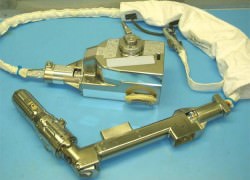
“I like all the tools, but the one I’ll probably be using the most is the Mini-Power Tool,” said STS-125 astronaut Mike Massimino before the flight. “It’s a little drill and is a unique tool that I think is going to be used in space for a long time. So, I’m very glad we’re going to be the first ones to use it and I bet you’re going to see a lot of space crews using it for many years on new space ships. This is going to be a pretty cool tool.”
NASA has long used a cordless drill called the Pistol Grip Tool, but needed a faster tool with less torque than the PGT, and Cassisdy likened the mini power tool to what Indy pit crews used to rapidly change bolts.
The mini power tool spins at 210 revolutions per minute, as opposed to the PGT’s 15.
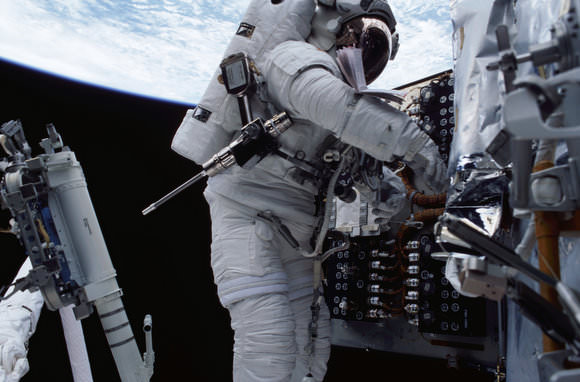
During the spacewalks, however, the astronauts did have to re-set the power tool’s torque settings to loosen some extremely tight bolts.
Some of these components, like the Space Telescope Imaging Spectrograph (STIS) were never designed for astronauts to fix on orbit. The instrument failed in 2004, and the problem was traced to the power supply. Justin Cassidy, the lead systems engineer for CATS team, compared the work astronauts would have to do on orbit to opening up a computer and replacing a board while wearing thick gloves on their hands and a fishbowl on their head.
“To actually open up an instrument and pull a board had never been thought of nor conceived that we would want to do that and therefore the interfaces were not very friendly to an astronaut,” said Cassidy.
In fact, there were 111 tiny screws that needed to be removed from the instrument in order to gain access to the board. Mike Massimino completed the STIS repair with the ingenious “fastener capture plate.”
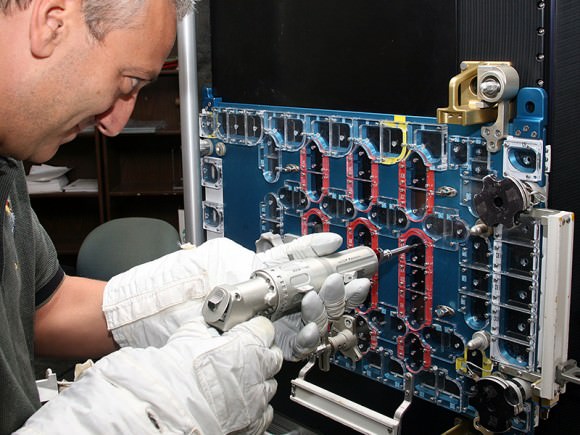
“The beauty of the fastener capture plate is, it does capture all the fasteners but it’s got a clear window,” said Cassidy. “And that clear window enables the astronaut, when he takes that power tool, he can actually see the little tiny bit going into the little tiny fastener. So, we have not blocked any of his visibility, yet when he takes that fastener out it won’t come out the little hole that the tool past through.”
It took 4-5 years to develop the mini power tool and the capture plate.
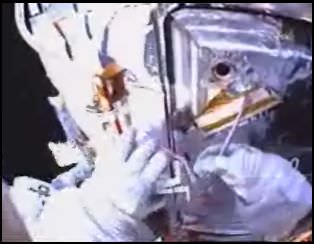
In today’s spacewalk, John Grunsfeld used a special tool to remove old insulation from the telescope so that new protective thermal insulation could be installed. The insulation protects the equipment bays on HST.
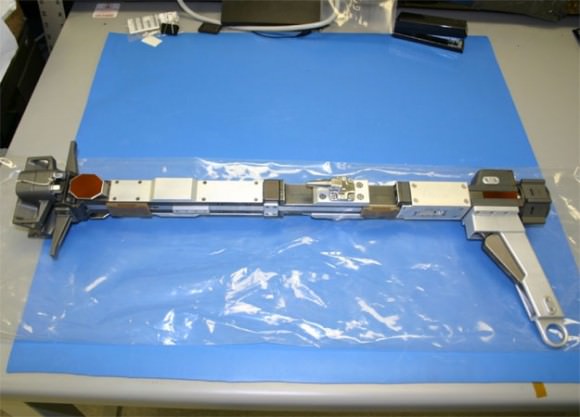
In order to replace the gyroscopes, or rate sensor units, which are located inside the Hubble Space Telescope and hard to reach while wearing a large spacesuit, engineers had to develop a tool that would work like an extension to an astronaut’s arm. Here is the Rate Sensing Units Changeout Tool, a crew member is able to reach inside the telescope without entering it, and capture and restrain a sensor unit by pulling a trigger. The tool is able to withstand temperatures ranging from -74 degrees F to 189 degrees F.
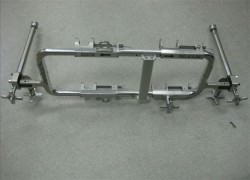
This Battery Extraction Tool allows an astronaut “grab” the batteries on Hubble, and exert additional force to remove it. This tool is capable of exerting several hundred pounds of exertion force.
“One could think you go to the hardware store and actually pick out a tool and use that in space,” said Cassidy. “The space environment is very harsh. It’s very hot, very cold, and it’s also in a vacuum and most tools, power tools for example that you pick up from Home Depot just would not survive in the environment of space.
Here are just a few things the CATs team has to consider when developing a new tool”
• The tight quarters the astronaut would have to work in with the tool.
• The brief amount of time an astronaut has to take out each fastener to release the board.
• Temperature swings of 500 degrees from the heat of direct sunlight to frigid shade. Either extreme can make the metal innards of a power tool seize up instantly.
• What would happen to each of the 111 fasteners in weightlessness.
• How much the tools weigh.
• Whether the tools can withstand the vibrations of launch.
Sources: NASA, Discovery Space,

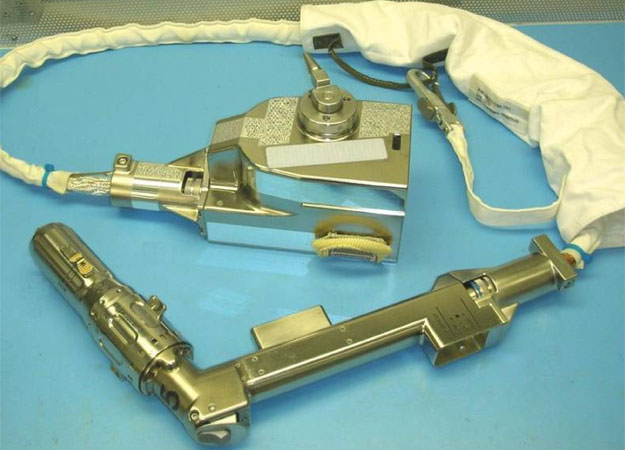
After wrenching off the handrail on STIS, I was amused to hear Mike Massimino say he was getting ready to play “Operation” when referring to using the attached capture plate on the instrument. I’m sure he was jokingly referring to the popular Milton-Bradley game. A little levity in zero-G. 🙂
I suppose it is curious that the technical and corporate knowledge base for orbital maintenance is going to be lost. In general I think the shuttle program has been a bit of an expensive waste of time. Yet it is a bit sad to think that these developments will be cast aside.
Lawrence B. Crowell
@lbc: I too mourn the loss of the technical & corporate knowledge that was so hardfought (and expensive, in more ways than monetary) to gain, only to be lost due to the end of the shuttle program.
I’m not in mourning, I’m verry excitited!
The ingenueity, the special tools, the adaptebility of humans yes we CAN!
We will conquer space, just give us time, we
can adjust if we need to!
My compliments to all who worked on this mission! Lets hope it works as intended?
Money has no value untill you use it.